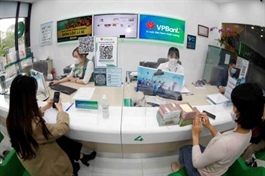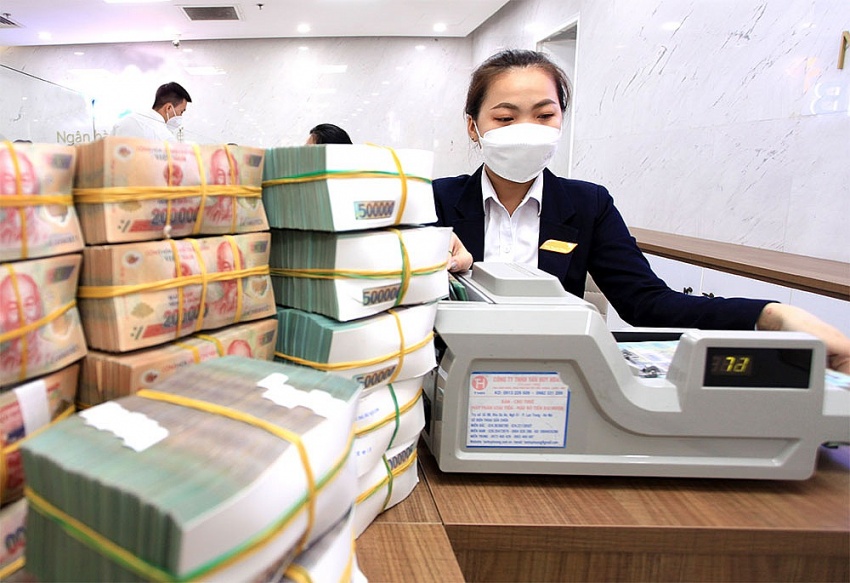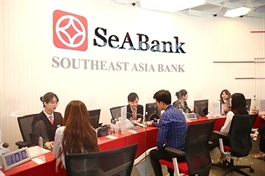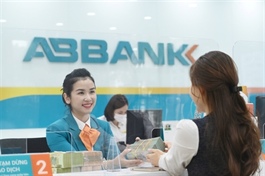Expansions ripe with South Korean banks
Expansions ripe with South Korean banks
As South Korean banks grapple with intensifying domestic rivalry, they are strategically shifting their focus to Southeast Asia, particularly Vietnam, as an emergent arena for growth and expansion.
KakaoBank, South Korea’s digital-only bank, last month announced a partnership with Thai financial group SCBX for its substantial fintech investments within the region.
The partnership centres around establishing a consortium aimed at obtaining a virtual banking licence in Thailand. The South Korean bank confirmed that both parties would collaborate throughout the consortium’s early operations and continue their partnership after securing the licence.
KakaoBank is set to hold at least a 20 per cent stake in the consortium, making it the second-largest shareholder. The partnership signifies a mutual conviction in Southeast Asia’s growth potential, with plans to jointly develop a broad range of financial services. KakaoBank’s strategy to leverage its robust expertise in mobile fintech and platform operations aims to consolidate its foothold in Thailand and extend its reach into other Southeast Asian markets.
Yun Ho-young, CEO of KakaoBank, expressed enthusiasm about the move. “KakaoBank is unwavering in its commitment to forging the future of finance and driving fintech innovation in Thailand in alliance with SCBX.”
Simultaneously, Vietnam is emerging as a preferred location for South Korean banks aiming to expand their footprint.
KB Financial Group’s chairman and CEO, Yoon Jong-kyoo, highlighted the importance of glocalisation as a key strategy for the company’s global expansion in June, cited Korea Times.
“If we pursue globalisation based only on our experience in South Korea, it will fail. We must build our competitive edge in each country,” Jong-kyoo said.
As part of this strategy, the largest banking group in South Korea is targeting the digital banking market in Cambodia while prioritising traditional banking services in Vietnam.
On the other hand, Kang Seoghoon, chairman of KDB, conveyed the bank’s interest in collaborating with Vietnamese firms on high-tech innovations, digital transformation, and green energy initiatives during a visit to Vietnam in June.
“We intend to establish a KDB branch in Vietnam to support local enterprises in their global expansion, fostering job creation and economic growth,” Seoghoon stated.
Similarly, IBK, another South Korean financial behemoth, also plans to form a legal entity in Vietnam, targeting small- and medium-sized enterprises.
“The State Bank of Vietnam is currently reviewing licence applications from new entities, including six South Korean banks such as IBK and KDB,” added Vietnam’s Deputy Prime Minister Le Minh Khai.
Other non-banking entities from South Korea are also eyeing Southeast Asia as a key growth market.
Hanwha Investment & Securities recently revealed plans to acquire a majority stake in Indonesia’s Ciptadana Securities and Ciptadana Asset Management, affiliates of the Lippo Group. Pending regulatory approval, this transaction is expected to close by the end of 2023.
Elsewhere, non-life group PVI Insurance inked a comprehensive MoU with NongHyup Property and Casualty Insurance on July 11.
Under the terms of the agreement, PVI Insurance and NongHyup P&C have committed to expand their cooperation in the field of reinsurance and to leverage their respective client networks and services to strengthen their product and service capabilities.
Duong Thanh Francois, chairman of PVI, said, “Vietnam and South Korea have elevated their relationship to a comprehensive strategic partnership. The Vietnam-South Korea Free Trade Agreement has also significantly boosted trade and investment activities between the two nations.”
CEO of NongHyup P&C Insurance, Choi Mun Seob said, “Through this agreement, we hope that both sides will cooperate closely in the Vietnamese insurance market, jointly develop and create a new profit model.”
The drive to expand overseas has seen South Korean commercial banks’ overseas assets grow by over 10 per cent last year. Data from the Financial Supervisory Service as of mid-July reveals that South Korean banks were operating 207 overseas branches at the end of last year, a net increase of three from the previous year.
These branches spanned 40 markets. Vietnam hosted the most branches at 20, followed by China at 17, and the US at 16. The total assets held by these overseas branches surged by 10.9 per cent to $203.1 billion at year-end, up from $183.2 billion a year earlier.






















